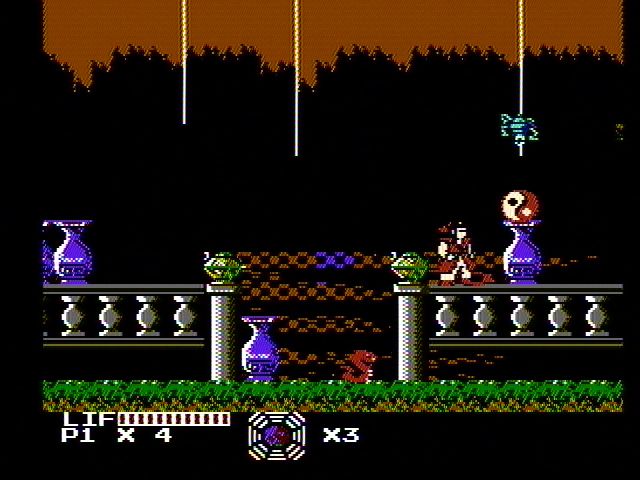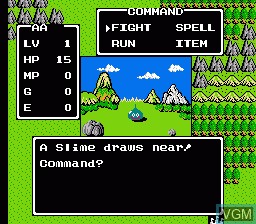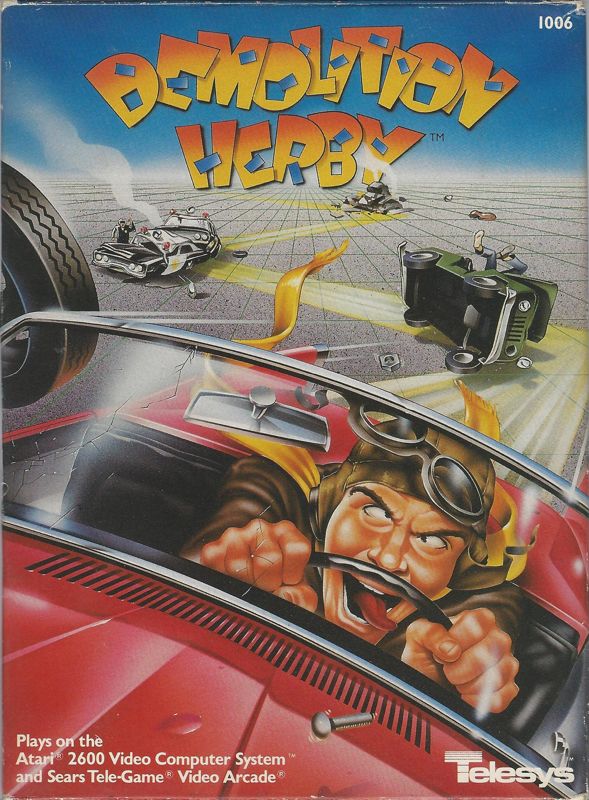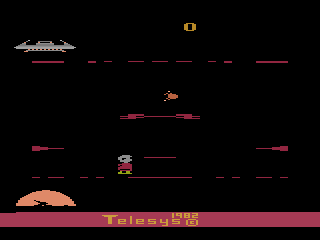Developer: Chunsoft
Publisher: Enix
Release Date: September 1990

I feel like Enix was powered by pure stubbornness before their merger with Square. At least that's what it felt like in America. How else can you explain them releasing four Dragon Warrior games in the United States? There are not a lot of series on NES that had four or more games, and you certainly wouldn't expect one of them to be a quirky RPG series that didn't even start getting released until 1989. Even Final Fantasy skipped a few games in the west. Enix decided to forge ahead, however, after the original Dragon Warrior became a surprise hit. Of course, that was with Nintendo's marketing. For the rest of the series, Enix would self-publish leading to a much more obscure trio of games. Every used game store has a copy of Dragon Warrior, but I rarely see the sequels anywhere. I know I saw at least one copy of Dragon Warrior II at a store, because I remember buying it many years ago. I also remember nearly pulling my hair out trying to finish it. Dragon Warrior II isn't a game for the faint of heart. It's big, it's confusing, and it is difficult. It's one of the most difficult turned-based JRPGs I have ever played. It's certainly more difficult than Enix's The 7th Saga. It's much more difficult, and everything is bigger compared to the first game, but not all the expansion makes for a better gaming experience. Dragon Warrior II is very much a transitional game.

Some of the lessons they learned from the first game translated into a better gaming experience. If you've played any games from later in the series, this one will look and feel more familiar than the original. While the original Dragon Warrior had a much more PC feel with its dark, mazelike dungeons, Dragon Warrior II has the bright, room-based dungeons that would influence the rest of the series. There are significantly more monsters, so fans of the series will see even more familiar faces. For people who obsess over tiny things, using stairs now happens automatically. I was especially happy that they fixed the key problem from the first game. Locked doors are opened by permanent keys that are found out in various places around the world. You don't have to go back to a specific town to buy keys that break after one use. Dragon Warrior II is the first game in the series to have a multi-character party and also the first to have multiple monsters in battle. I will talk more about these later, but they are certainly more in line with other Dragon Quest games. It even has cutscenes thereby expanding the narrative possibilities. It's impressive when an NES game has any kind of story, so the expansion from the excuse plot of the first game is quite welcome.
It's also much, much bigger than the first game. The original landmass is just a small portion of a much larger map, and they were certainly proud of their bigger space. The first section of the game has your character travelling around a large section of map looking for companions. I feel like just this first continent is bigger than the entire first game. Luckily there are also multiple places to save. You still can't save in dungeons or on the world map, but most large towns have a place to save. If you were driven crazy by the claustrophobic grind of the first game than you will certainly appreciate the expansiveness of Dragon Warrior II. There's a bit less mindless grind and a bit more exploring. Of course, with battles as difficult as they are I've never been able to get into much of a mindless state. There is even a boat for more exploring. It was very impressive for 1987, and three years later it certainly still held up. I don't think it felt as old as the first game did despite its release gap being about the same. It's nothing like the multi-planet madness of the first two Phantasy Star games, but it certainly showed off the potential of RPGs even in an 8-bit setting. It all sounds great, but yet I just can't rave about Dragon Warrior II. I want it to be a masterpiece, but in spite of the developers attempt to make an expanded experience they fall short in some very critical areas. They had many great ideas, but they faltered in the execution.

I already mentioned the expanded world map, and it's both a good and a bad thing. In the pre-boat section of the game the set-up is at least fairly logical. The main problem is that towns and dungeons are too far apart. There are big sections where there is simply nothing to find. And while the first few towns are clumped fairly close together, as the game goes on, they get farther and farther apart. After the party gets their boat things become extremely confusing. Most of the new areas are shaped oddly with the important points hidden deep within the continents. It's very easy to get lost out there looking for a new area to explore, and it doesn't help that there is no in-game map. Hopefully you bought this game new and had your fold-out map handy, or you exist in the internet era and looked one up. I can't imagine renting this game thirty years ago with no instructions or map to help me. Also, the teleporting item, wings of wyvern, only takes you back to the last town you saved in. The second half of the game features a lot of traveling, and it's hard when there's no quick way to travel between towns. All the while you have to put up with a downright brutal encounter rate. I can't tell you how many times I encountered battles within five steps of each other, and it's not unusual to fight two battles back-to-back. Just about every Dragon Warrior game going forward would have great world maps, and big quality of life improvements would be on the horizon, but in this early state it doesn't quite come together.
And it's the game's biggest innovation that I have the biggest problem with. I certainly love the concept of having multiple party members. Later in 1987 Final Fantasy would show gamers what was possible with a multi-party system. Every type of character had unique skills and weaknesses. Chunsoft would copy this model to great effect with Dragon Warrior III. Unfortunately, with Dragon Warrior II they had no idea what to do with the extra party members. They basically took the versatile hero from the first game and split him up into three people. The main character is only good for attacking with no magic or other skills. The prince, who you pick up second, is mixed character who can fight and cast spells but never gets that good at either. He doesn't get any of the good combat equipment and never gets enough MP to be used as a pure magician either. He is mostly good for casting healing spells. The princess, the final character of the trio, is only good for spells. She has almost no equipment and is constantly vulnerable to attack. Her combat spells are nice, but there is practically no way to restore MP outside of towns, so they constantly need to be rationed. This makes for a lot of battles where two thirds of the party are either going to be blocking or doing scratch damage.

The game's difficult combat makes the situation even worse. There are groups of monsters to contend with, and you are not able to select which monster in a group each character attacks. This makes it hard to strategize in battle. You can't focus your strong attack on one monster in a group and two weaker attacks on another for example. This leads to many wasted attacks. Of course, sometimes monsters will appear as individuals in battle, but when this happens you can't use group spells on them. Both situations make combat extremely difficult. I've already touched on this, but it bears repeating. Dragon Warrior II is just hard. Battles will see the screen fill up with the most difficult enemies in the area, and they seem to have all the advantages. Monsters are not shy about casting all manner of status spells including those trees that cast instant death spells over and over. Exploring the open world is tempting, but because of the high difficulty you pretty much have to go everywhere in the correct order. Also, why did they make antidote a non-combat only spell? That doesn't connect to the main point of this paragraph. It's just another cruel thing about combat I just thought of.
Now that I've said all that I will admit that I do have fun playing Dragon Warrior II. The formula is just too strong for a Dragon Quest game to be a total failure. Sure, it's difficult and there's a lot of grinding, but there's still something appealing about it. Having three characters that all start at level one means that there's always someone relatively close to leveling up. In a game like Final Fantasy the party is complete from the very first moment, and they all gain levels at the same time unless a party member dies and misses some battles. I like the staggered system better. The difficulty can be frustrating, but that only makes the victories sweeter. Even games I love will sometimes fade from my mind, but I'll never forget playing through Dragon Warrior II for the first time. And while exploration can be dangerous, it's still exciting to attempt. It's not the series' greatest world, but it's still one I want to fully experience. There are enough hidden items and secrets to make it worthwhile. I also enjoy that it is a distant sequel to the first game and even features the original landmass as a late game easter egg. Continuity is rare with RPG series.
It's a testament to how good these Dragon Quest games are that my least favorite game in the whole series is still my 25th highest ranked game. Of course, my tastes could change as I play through the other ones, so make sure you read those reviews too. It's an awkward and difficult game that is full of great ideas but hindered by its disappointing execution at times. If you are a fan of RPGs and want to play some of the historic ones than I certainly recommend it. If you're a more casual gamer than it's only going to lead to pain and frustration. I am a completely lunatic who has to play everything and even I got frustrated at times. Of course, game #26 on my list is Teenage Mutant Ninja Turtles so I guess that's just the pain and frustration section of the list. That might be the best description of the NES. They made games that were equal parts fun and painful. That might sound odd, but it was obviously a formula for success.
Nintendo Entertainment System Quality Percentage: 25/50 or 50%
https://docs.google.com/document/d/1G01RKJ7-caaal5lgFfGgPfZRGcqWlv4E3E2E615UYKg/edit?usp=sharing








































